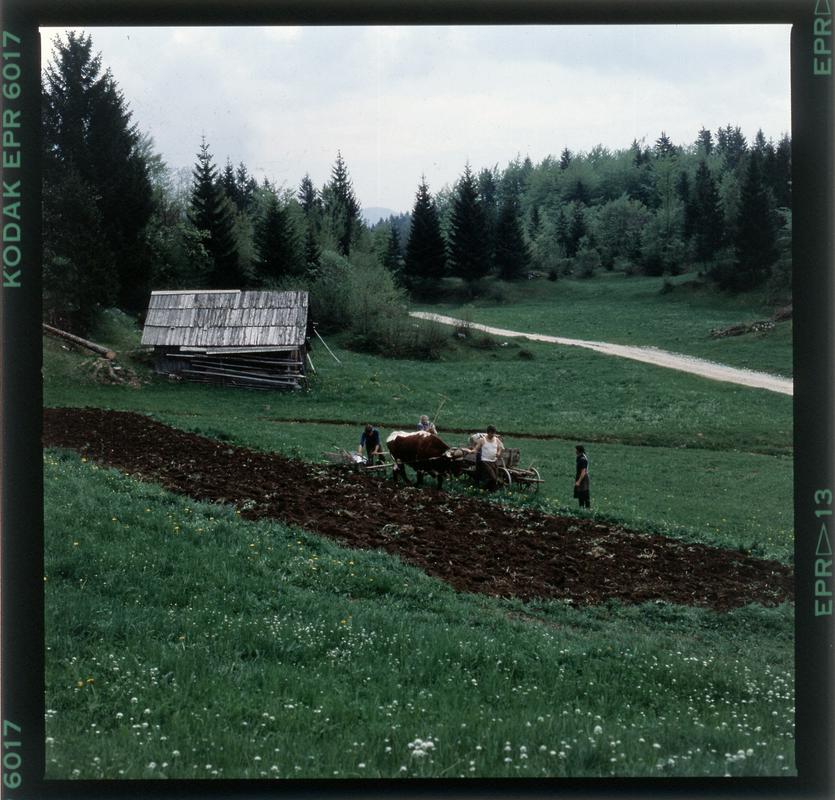
For centuries, the remote, heavily wooded region of Kočevje in what is now Slovenia was inhabited by German-speaking Gottscheers. Most of them lived in small but prosperous villages. By the 20th century, over 175 settlements supported a rich cultural life. Among them was the village of Koprivnik, known as Nesseltal in German.
The village’s known history dates back to 1622, when a large church was built in Koprivnik. It was joined by a chapel in the 19th century.
By the interwar period, Koprivnik was the seat of the local municipality, and had almost 300 inhabitants, as well as a post office, a school, a bakery, several stores, and no fewer than five inns that served as centers of social life. Villagers grew fruit and even made their own wines, despite the relatively high elevation of the area.
World War II changed things forever. Slovenia was occupied and split up by the Axis powers, and Hitler, striking a deal with Mussolini, decided to have the Kočevje Germans forcefully removed from their ancestral homeland, which was annexed by Italy. When Communists took over Yugoslavia after the war, their exile became permanent.
Suddenly, Koprivnik became deserted. Both the church and the chapel were burned down in the years after the war. For a while, it seemed that the village would experience the fate of other Gottscheer communities and become an abandoned town overgrown with bushes. But in 1970, a church was built on the site of the former chapel, and slowly, new inhabitants began to settle in the village from around Slovenia.
One of those new villagers was a man named Matjaž Matko. In 2008, he founded a non-profit society dedicated to preserving the history of Koprivnik. Thanks to his efforts, visitors can now tour an ethnological collection that helps to tell the story of the German communities. A collection of photographs gives further insight into Kočevje of yesteryear and the people who shaped it. An old house built in the traditional Kočevje style has been restored, and visitors can now spend the night in one of its rooms. The following morning, they can even take part in a guided tour of the village and the surrounding woods. Even the Germans’ old apple orchards have been brought back to life; in fact, the village is becoming known for its apple juice.
With the help of EU funds, the project is bringing back life to a once-abandoned village – and reminding the outside world of a unique culture that once shaped Slovenia’s mysterious Kočevje region.

































































